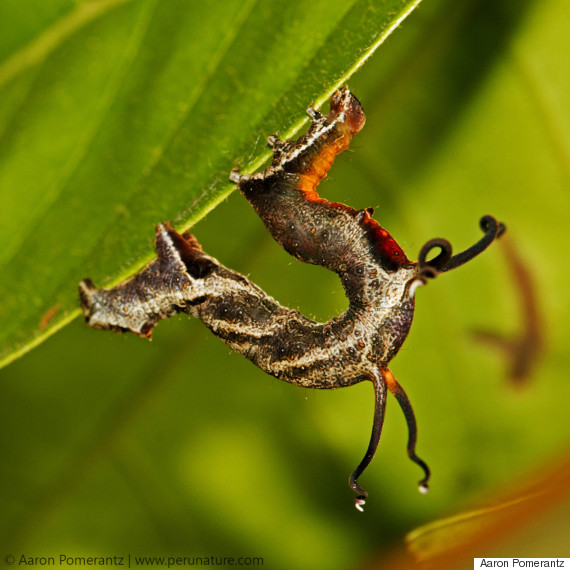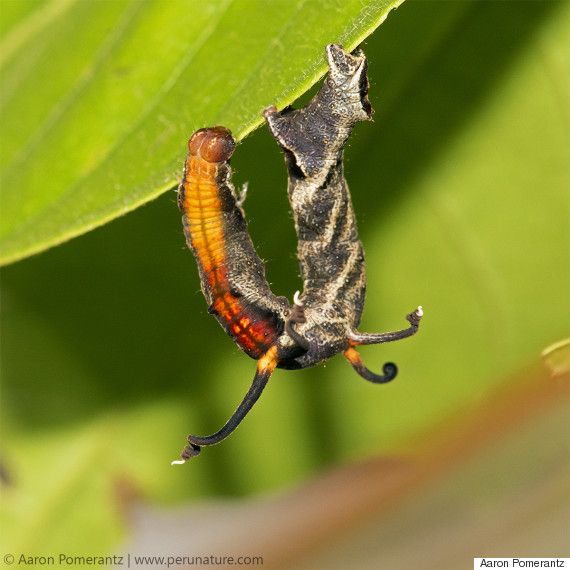
On my recent travels through the Peruvian Amazon, I came upon the craziest caterpillar that I have ever seen, and subsequently yelled at it for hours.
Why did I yell at it? Well, its strange behavior toward sound was why I noticed it in the first place. I had just climbed to the top of a canopy tower overlooking the rainforest when I called to my group below me -- suddenly a flash of movement at eye-level caught my attention.
On a nearby tree branch hung a caterpillar with four strange tentacle-like appendages protruding from its abdomen. I might never have noticed this small brown insect had it not been for its unusual movement: noises would cause it to fire its tentacles in randomized directions, then slowly twirl back into a spring-like "ready" position to await its next alarm. This reaction to noise was so peculiar that once my group joined me around the creature, we proceeded to take turns yelling at it and filming its contorting reactions for over an hour.

After a little research, I found that this caterpillar is in the moth family Geometridae and is in the genus Nematocampa. Also referred to as "horned spanworms" or "filament bearers," these peculiar caterpillars can be found in North America and the Neotropics.
David Wagner, in his field guide "Caterpillars of Eastern North America," notes:
It is difficult to imagine what the [Nematocampa] larva is mimicking, but the overall effect is not unlike a fallen brown flower with exerted stamens. Alarmed caterpillars shunt hemolymph into filaments, enlarging them by as much as twice their resting length.
What Wagner seems to be proposing is that the larva movement is similar to the way flowers or other plant matter move in the wind: the behavior more effectively blends the caterpillar into its surroundings.
Other potential purposes this behavior may serve include:
- The tentacles extend when the caterpillar is alarmed so that an attacking predator (such as a bird) has a higher probability of snagging a tentacle, as opposed to the main body, so that the caterpillar may drop away and escape with its life (similar to how some lizards are able to lose their tails).
- The setae, or "hairs," located at the tip of a long tentacle could be highly sensitive vibration detectors that are able to sense predacious birds or insects that make nearby sounds.

What do you think? Screaming at caterpillars doesn't fall into most people's job descriptions. But that's exactly what I found myself doing a couple weeks ago in the Peruvian Amazon, all to bring the story of this bizarre organism to you! Leave a comment below and let us know how you feel about this peculiar caterpillar found in Tambopata, Peru.

